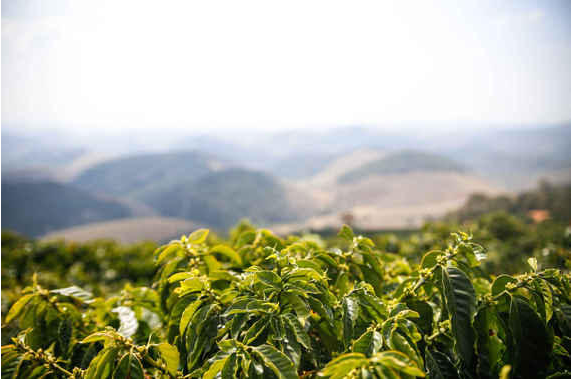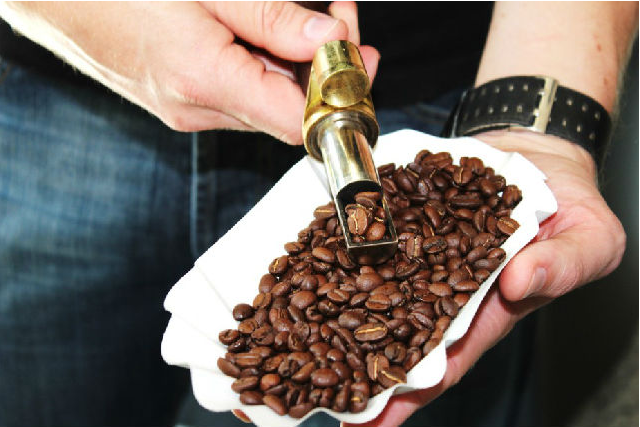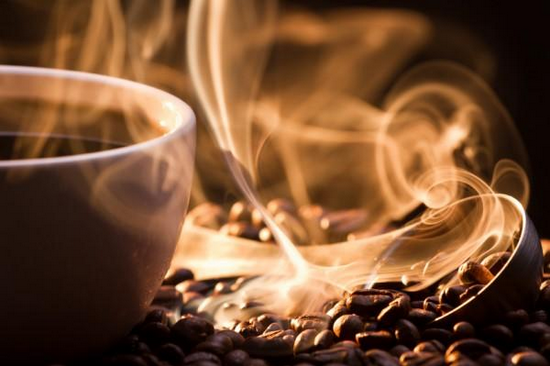Nine links teach you to tell the good from the bad of coffee beans
Most people do not have much contact with coffee, and it is very rare to be able to identify the type of coffee from coffee beans. Even if you are lucky enough to know coffee, you may not go through everything from beans to liquids. Coffee is good and bad, so how can we identify it?
1. Microclimate where coffee beans grow.
Coffee comes in many shapes and sizes, and although most of them are the same shape, it is best to grow specific varieties according to different local microclimates. The best farmers will adjust measures to local conditions.

2. Picking time
At the end of the harvest season, coffee beans are picked before they are fully ripe in preparation for the next season. Most of these coffee beans are classified as bad varieties called "subgrade" because they are not ideal.
3. Do you want to highlight the ideal features or cover up the defects in the baking process?
Not to mention that any roaster, even ordinary people, can produce dry, gray and dark coffee. This is a way to cover up defects, to produce more complex fruity or caramel-flavored coffee, high-quality coffee beans and attention to detail are indispensable.

4. The degree of attentiveness in drying
Once the coffee beans are picked, there are several different ways to dry the beans. The easiest way is to leave them outside for a few weeks, or use an expensive dryer. High-quality coffee beans are tested at any time to make sure they don't get moldy, while poor ones are left unattended in the sun because labor costs are too high.
5. Whether the coffee is cooled with water
There are too many coffee beans roasted at one time in a large coffee roaster, so it is impossible to use air to cool down, and it is necessary to spray water mist quickly inside. Although there is no obvious data, many bakers believe that although the water evaporates quickly, if the water comes into contact with the coffee beans, it will reduce the overall quality.
6. The quantity of coffee purchased by the roaster
From the perspective of farm grade, there is a direct relationship between quality and quantity. The quantity of high-quality coffee in the world is by no means sufficient for large roasters. Small companies can buy 5-10 bags, as well as other high-quality coffee for limited or small-scale operations, but these quantities are far less than a batch order from a large roaster. Once a roaster reaches a certain scale, their ability to provide high-quality coffee is greatly reduced.
7. Storage time
If the coffee beans used in the coffee shop come from a good local baker, they are coffee beans within a week, which ensures freshness. Different from coffee beans from big brands but not of high quality.
8. Quality or quantity
In order to expand the scale, many manufacturers will eventually sacrifice quality because of the quantity of production. When roasting coffee beans for £2 million a week, there is no time for subtleties.
9. Analysis of coffee aroma
What makes coffee special is its fragrance. Although professional bakers often think it silly to take taste notes, if a company uses general terms such as "smooth" or "blod", it shows that they are not trying to present more subtle features.

Important Notice :
前街咖啡 FrontStreet Coffee has moved to new addredd:
FrontStreet Coffee Address: 315,Donghua East Road,GuangZhou
Tel:020 38364473
- Prev

Detailed analysis of the ingredients of coffee beans what are the ingredients in a coffee bean?
★ moisture: the water content of coffee beans varies greatly with different processing stages and products. The moisture content of wet coffee beans with film is about 50%, while that of dried raw coffee beans is about 10%-13%, and that of roasted coffee beans is only less than 5%. The existence of water in coffee beans is the same as other kinds of food and beverages, because it contains a considerable amount of hydration colloid macromolecules.
- Next

How to buy coffee beans, how to save coffee correctly
How to properly preserve coffee? Fresh coffee, the most feared is the poor storage environment, so that the quality of coffee is destroyed, and the early end of the best drinking time. So where and in what container coffee is stored becomes particularly important. The preservation of fresh coffee, if subjected to high temperature, humidity, oxygen oxidation, and light irradiation, will affect the flavor of coffee brewing. ideal
Related
- Guji coffee producing area of Guji, Ethiopia: Humbela, Shakiso, Wulaga
- What is the most expensive variety of Qiloso in BOP multi-variety group?
- How to store the coffee beans bought home?
- Why are Yemeni coffee beans so rare now?
- Ethiopian Sidamo all Red Fruit Sun Sun Santa Vini Coffee beans
- SOE is mostly sour? What does it mean? Is it a single bean? what's the difference between it and Italian blending?
- Is Italian coffee beans suitable for making hand-brewed coffee?
- How to choose coffee beans when making cold coffee? What kind of coffee beans are suitable for making cold coffee?
- Just entered the pit to make coffee, what kind of coffee beans should be chosen?
- Can only Japan buy real Blue Mountain Coffee? What are authentic Jamaican Blue Mountain coffee beans?

